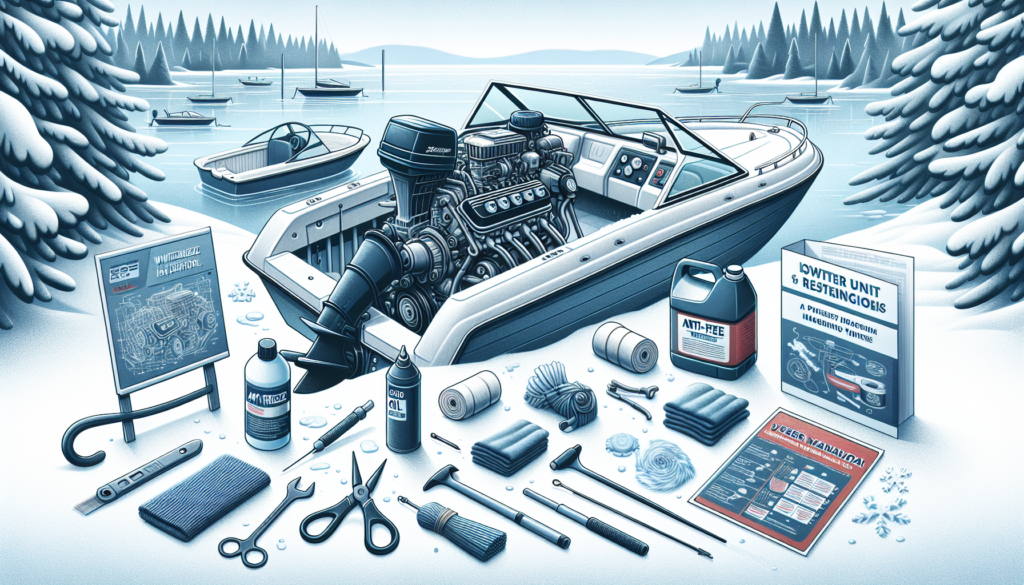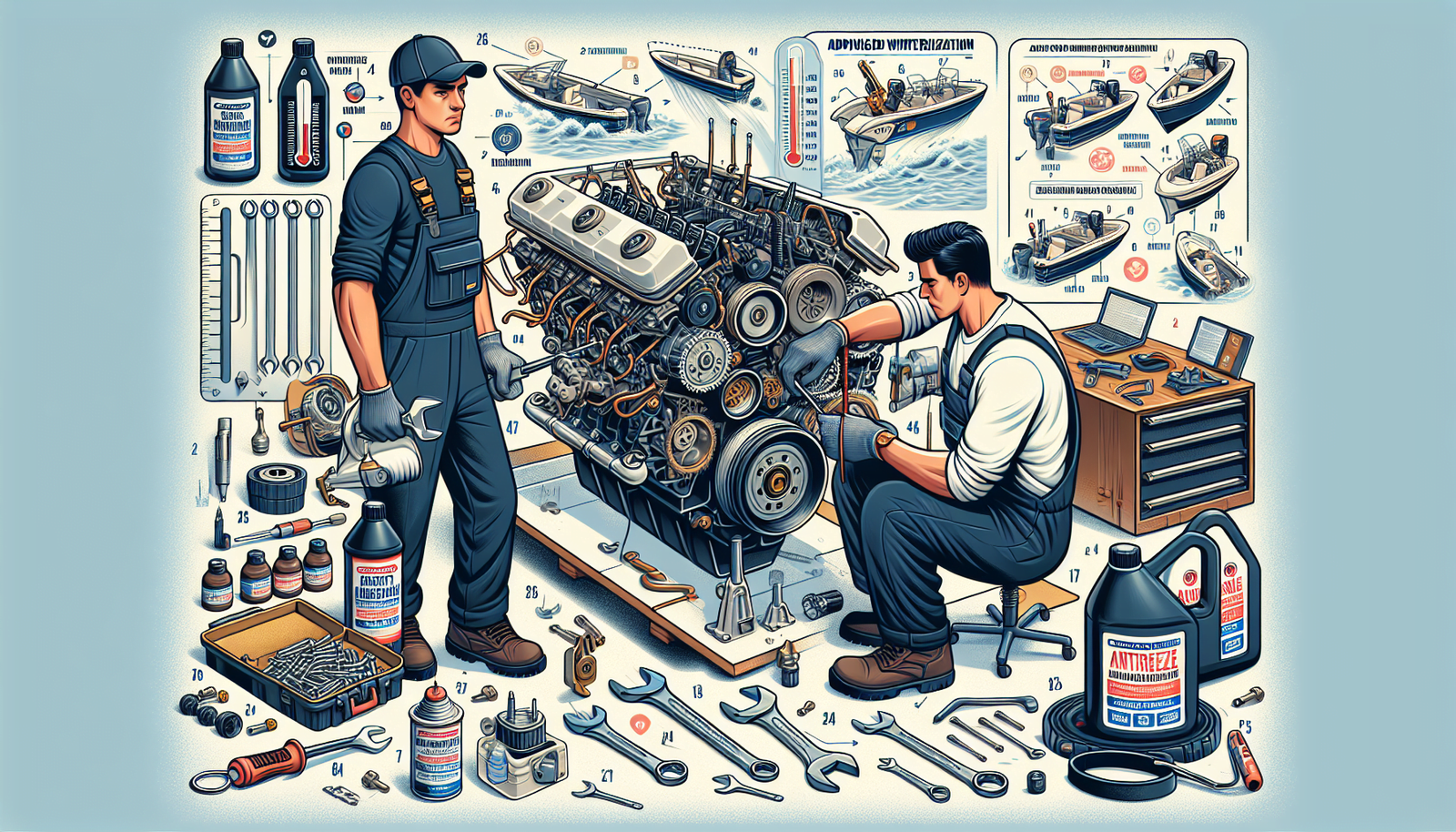As the frosty winter winds start to blow, it’s time for you to get your boat ready to weather the change of seasons. Winterizing your boat is crucial, but the engine certainly requires distinct attention. The article “Best Ways To Winterize Your Boat Engine” serves as a comprehensive guide to ensure your boat’s engine is tucked in snugly to endure the long winter. Through effective techniques and key insights, this article helps you discover the best ways to protect, maintain, and winterize your boat engine without breaking a sweat, ensuring a seamless boating experience come next summer.

Understanding the Importance of Winterizing Your Boat Engine
Boating is an exciting and pleasurable hobby for most people. However, as the joy of summer fades and winter approaches, it’s time to gear up for the task of protecting your boat’s engine from the harsh winter weather. This process, which is often known as winterizing, is essential to maintaining the longevity of your precious marine investment.
Why winterizing is crucial for boat engine longevity
Winterizing your boat’s engine is more than just a preventive measure; it’s a proven way of enhancing engine lifespan. During winter, the engine could experience a series of freezing and thawing episodes. This cycle may lead to expansion and contraction of the engine parts, potentially causing serious damage. It’s a little like getting your body ready for the flu season – taking preventive measures can spare you from nasty surprises and hefty repair bills.
The risks associated with not winterizing your boat engine
The risks involved in neglecting the winterizing process are serious and considerable. These risks range from cracked engine blocks, corrosion, and damage resulting from frozen water in your boat’s cooling system. Furthermore, it could lead to the deterioration of seals and hoses that could make your boat’s engine operation jerky and inconsistent.
Evaluating Your Boat’s Engine Type
Not all boat engines are made equal. They differ based on factors such as their power generation method, cooling method, and fuel type.
Identifying types of boat engines
Boat engines come in two main types: inboard and outboard. Inboard engines are built into the boat’s hull, making them less exposed to the influence of weather. In contrast, outboard engines are mounted on the outside of the boat’s stern and are therefore more susceptible to direct cooling from the winter air.
Customizing winterization process according to engine type
Just like how everyone has a different tolerance level to cold, every engine type has specific winterizing procedures. An inboard engine, for example, needs to be drained and flushed, while an outboard engine requires a special type of antifreeze to protect it from damage.
Draining Out Existing Fluids
Your boat’s engine runs on various types of fluids, which may include engine oil, coolant, and fuel. These fluids need to be handled correctly during the winterizing process to prevent damage to the engine.
How to properly drain engine oil
Begin by running the engine to warm up the oil, which makes it easier to drain. Turn off the engine, then carefully disconnect the drain plug and let the oil flow into a designated container. Don’t forget to recycle the used oil properly.
Flushing and draining the cooling system
To effectively drain your cooling system, remove the drain plugs or petcocks. Running distilled water through the system can also help flush out any remaining coolant.
Emptying out the fuel tank or using fuel stabilizers
Emptying the fuel tank isn’t always the best idea. Instead, it’s often recommended to fill the tank to avoid condensation and adding a fuel stabilizer to preserve the fuel during the winter.
Cleaning the Boat Engine
A clean engine is the first step towards a successful winterization process.
Importance of cleaning the engine before winterization
Thoroughly cleaning the engine helps to remove grime, oil, and other contaminants that could accelerate corrosion during the winter months. Think of it like spring cleaning; by getting rid of the dirt, your engine will be ready for a fresh start in the spring.
Steps for comprehensive engine cleaning
Using an approved engine cleaner, spray the engine and let it soak as per the instructions. Then scrub off the stubborn dirt and rinse with fresh water. Ensure the engine is fully dried to prevent any rust or corrosion.
Materials needed for engine cleaning
You’ll need an approved engine cleaner, a bristle brush for scrubbing, fresh water for rinsing, and a cloth or air compressor to dry off the engine.

Changing the Engine Oil and Filter
Old oil can develop sludge and deposit formation, which can harm the engine.
How to choose the right engine oil for our boat
Choosing the right engine oil depends on various factors such as engine type, manufacturer’s recommendation, and local climate. It also makes sense to consult with a marine professional or an authorized dealer in this regard.
Steps for changing engine oil
After draining the old oil, it’s time to refill the engine with new oil. Simply remove the oil fill cap and carefully pour in the new engine oil up to the manufacturer’s recommended level, making sure not to overfill.
Changing the oil filter and why it’s important
Changing the oil filter is as crucial as changing the engine oil. An old, clogged filter cannot effectively remove contaminants from the oil, which can result in damage to the engine components.
Fogging the Engine
Engine fogging is just as important as any other steps in winterizing your engine.
Understanding engine fogging and its benefits
The fogging process involves spraying a special protective oil into the engine’s cylinders to create a coating that protects the engine’s internal parts from rust and corrosion. This fogging oil acts as a shield for the engine parts against moisture and corrosion.
How to properly fog your boat’s engine
With the engine running and the boat in neutral, you slowly spray the fogging oil into the air intake until smoke appears in the exhaust. After that, you shut off the fuel supply and allow the engine to stall. It’s advisable to properly follow the instructions on the fogging oil can.
Safety measures while fogging an engine
Always ensure the engine is not overheated before starting the fogging process, and keep away any open flame during the fogging process, as fogging oil is highly flammable.

Protecting the Fuel System
In addition to the engine, winterizing should also encompass the fuel system.
Why protecting the fuel system is important
A neglected fuel system could lead to problems such as jellied fuel, clogged filter and lines, or a damaged carburetor. To avoid these issues, it’s important to stabilize and protect your boat’s fuel system before winter sets in.
Steps to protect the fuel system
To protect the fuel system, add a fuel stabilizer to the fuel tank, then run the engine to let the stabilized fuel circulate throughout the entire system.
Using fuel additives and stabilizers
Fuel stabilizers and additives are a great way to preserve your fuel and keep it from breaking down during the winter. They also help prevent moisture from accumulating in the fuel system and causing harm to the engine.
Inspecting and Protecting the Battery
The battery plays an essential role in the boat’s function and requires some attention before winter storage.
Inspecting the battery for potential issues
Before the winter, you should inspect the battery for any visible damage and test its charge. Any issues found during inspection should be addressed immediately to avoid failure when you’re ready to use the boat again.
How to protect and maintain boat batteries during winter
Removing the battery and keeping it in a cool, dry place, fully charged, helps prolong its lifespan and enhance its performance. A trickle charger comes in handy to keep the battery at full charge during the entire winter period.

Using Engine Antifreeze
Antifreeze application is another integral part of winterizing your boat, particularly the engine.
The need for applying antifreeze in a boat engine
Antifreeze helps prevent freezing and provides protection against rust and corrosion. It’s much like insulating your home; you keep the insides from getting as cold as the surrounding winter environment.
Types of antifreeze suitable for boat engines
When choosing antifreeze for your boat’s engine, go for non-toxic, propylene glycol-based antifreeze. It’s environmentally-friendly and safer than the traditional ethylene glycol alternative.
Instructions for applying Engine Antifreeze
Running antifreeze through your engine is fairly straightforward. You simply connect a hose between the antifreeze container and your engine’s coolant system until it’s full.
Storage Considerations
Selecting the perfect store for your boat’s engine is the final step in winterizing it.
Choosing the right location for boat engine storage
Choosing a dry, covered area, preferably out of direct sunlight, the wind can help protect your boat engine from the harsh elements and avoid any unwarranted damage.
Factors affecting boat engine during winter storage
Various factors can impact the engine during winter storage, such as cold temperatures causing contraction of parts, moisture leading to corrosion, and pests that can wreak havoc on wiring and hoses.
How to properly cover and seal the boat for winter
Covering and sealing your boat correctly involves using a quality boat cover that fits snugly, closing all the vents, and sealing the exhaust outlet to hamper the access of pests.
In summary, although winterizing your boat’s engine might seem a chore, remember that it will definitely pay off in terms of enhanced engine longevity and reduced repair costs. With all these tips in mind, you’re surely ready for the winter now – happy winterizing!


[…] for your treasured possession, if not handled properly. This article gives the finest methods on how to winterize your boat engine. We know you care about your boat ride and want to keep it in top-notch condition, that’s why […]